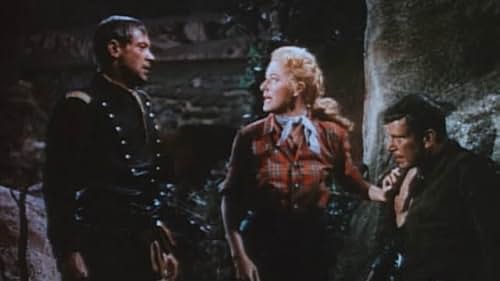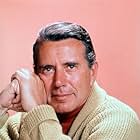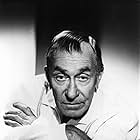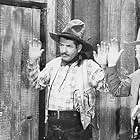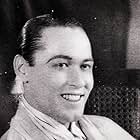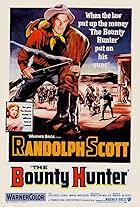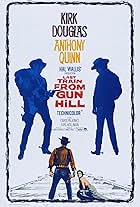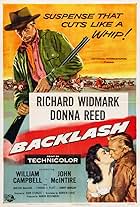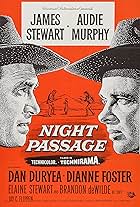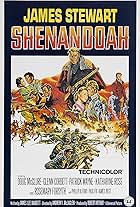IMDb RATING
6.6/10
3.2K
YOUR RATING
During the Civil War, a group of Confederates escapes from the Union POW camp at Fort Bravo but has to contend with the desert, the Mescalero Apaches and the pursuing Union troops.During the Civil War, a group of Confederates escapes from the Union POW camp at Fort Bravo but has to contend with the desert, the Mescalero Apaches and the pursuing Union troops.During the Civil War, a group of Confederates escapes from the Union POW camp at Fort Bravo but has to contend with the desert, the Mescalero Apaches and the pursuing Union troops.
Carl Andre
- Trooper
- (uncredited)
Walter Bacon
- Confederate Prisoner
- (uncredited)
Richard P. Beedle
- Confederate Lieutenant
- (uncredited)
Arthur Berkeley
- Confederate Prisoner
- (uncredited)
Chet Brandenburg
- Confederate Prisoner
- (uncredited)
Harry Cheshire
- Chaplain
- (uncredited)
Tom Coleman
- Confederate Prisoner
- (uncredited)
Sayre Dearing
- Confederate Prisoner
- (uncredited)
- Director
- Writers
- All cast & crew
- Production, box office & more at IMDbPro
Storyline
Did you know
- TriviaThis film was a mild success at the box office, earning MGM a profit of $104,000 (about $1.2M in 2023) according to studio records. It brought in about $110,000 more outside of North American that it did in the USA and Canada - a financial rarity for the time.
- GoofsCapt. Roper is in a gunfight in Death Valley and is shot in the left shoulder. When riding into town his right arm is in a sling.
- Quotes
Cabot Young: You must have missed!
Campbell: Naw, we just killed the same one twice!
[takes aim and shoots Indian off his pony with one shot]
Campbell: See what I mean?
- ConnectionsEdited into How the West Was Won (1976)
- SoundtracksYellow Stripes
Written by Stan Jones
Featured review
In 1863, with the American Civil War raging, a prison camp has been set up to house Confederate prisoners deep in the Arizona Territory. This is the eponymous Fort Bravo.
Resentful of captivity, the Southern prisoners remain in a constant state of unrest, and escape bids are common. However, the hostile remoteness of the terrain and the vigilance of the Union's Captain Roper make a successful breakout virtually impossible. Beyond the sheer physical obstacles barring the path to freedom lie the ferocious Mescalero indians.
Roper is "the man that's always after people". A stern martinet, he holds it to be a matter of honour that every escapee shall be found and dragged back. He is hated by the prisoners, and though some of his own side dislike his methods, he is respected as an efficient and reliable officer.
There is a void in Roper's life. He needs love. "You've a big fist inside you that's always doubled up," he is told. For all his attention to duty, Roper is deeply unhappy. Then the beautiful Carla Forrester arrives at Fort Bravo ...
The film has a marvellous look. Shot by director of photography Robert Surtees on bright, sundrenched locations and developed in a process called Ansco Color (a new one on me - though that's not saying much), the movie is a feast for the eye. Creamy yellow sand and tawny hills form beautiful backgrounds against which the blue cavalry uniforms stand out magnificently. When Roper and Carla go for their romantic horseride, there is a vast sky above their heads. The shots of the indian riders circling the beleaguered cavalry troopers are gorgeous. At the climax of the film a small group Fort Bravo people is pinned down by the indians in a shallow depression in the sand, and yet again the look of the images is quite simply stunning. Warren Newcombe's special effects include volleys of indian arrows cascading down on the Fort Bravo party in arcs of hissing death.
There are one or two quibbles. Is a troop of cavalrymen the proper unit to garrison a prisoner of war camp? Would a mobile detail which was expecting to be ambushed really ride through a steep canyon? Surely the waltz playing at the fort social event - "The Mountains of Mourne" - is an anachronism? My guess is, the tune wasn't composed until fifty years after this. The 'night in the desert' passages are patently filmed in the studio - a great shame, considering the beauty of the location shots.
William Holden is at his tight-lipped, angry best as Captain Roper. Eleanor Parker looks divine as the improbable Carla. The trio of likeable Confederates, Marsh, Young and Campbell (played by John Forsythe, William Campbell and William Demarest resectively) doesn't quite come off as a comedy sub-plot.
The film is a good cavalry-and-indians caper, with Holden carrying most of it on his capable shoulders. There is even a hint of character development, as Roper learns eventually that "there's something better than being tough."
Resentful of captivity, the Southern prisoners remain in a constant state of unrest, and escape bids are common. However, the hostile remoteness of the terrain and the vigilance of the Union's Captain Roper make a successful breakout virtually impossible. Beyond the sheer physical obstacles barring the path to freedom lie the ferocious Mescalero indians.
Roper is "the man that's always after people". A stern martinet, he holds it to be a matter of honour that every escapee shall be found and dragged back. He is hated by the prisoners, and though some of his own side dislike his methods, he is respected as an efficient and reliable officer.
There is a void in Roper's life. He needs love. "You've a big fist inside you that's always doubled up," he is told. For all his attention to duty, Roper is deeply unhappy. Then the beautiful Carla Forrester arrives at Fort Bravo ...
The film has a marvellous look. Shot by director of photography Robert Surtees on bright, sundrenched locations and developed in a process called Ansco Color (a new one on me - though that's not saying much), the movie is a feast for the eye. Creamy yellow sand and tawny hills form beautiful backgrounds against which the blue cavalry uniforms stand out magnificently. When Roper and Carla go for their romantic horseride, there is a vast sky above their heads. The shots of the indian riders circling the beleaguered cavalry troopers are gorgeous. At the climax of the film a small group Fort Bravo people is pinned down by the indians in a shallow depression in the sand, and yet again the look of the images is quite simply stunning. Warren Newcombe's special effects include volleys of indian arrows cascading down on the Fort Bravo party in arcs of hissing death.
There are one or two quibbles. Is a troop of cavalrymen the proper unit to garrison a prisoner of war camp? Would a mobile detail which was expecting to be ambushed really ride through a steep canyon? Surely the waltz playing at the fort social event - "The Mountains of Mourne" - is an anachronism? My guess is, the tune wasn't composed until fifty years after this. The 'night in the desert' passages are patently filmed in the studio - a great shame, considering the beauty of the location shots.
William Holden is at his tight-lipped, angry best as Captain Roper. Eleanor Parker looks divine as the improbable Carla. The trio of likeable Confederates, Marsh, Young and Campbell (played by John Forsythe, William Campbell and William Demarest resectively) doesn't quite come off as a comedy sub-plot.
The film is a good cavalry-and-indians caper, with Holden carrying most of it on his capable shoulders. There is even a hint of character development, as Roper learns eventually that "there's something better than being tough."
- How long is Escape from Fort Bravo?Powered by Alexa
Details
Box office
- Budget
- $1,520,000 (estimated)
- Runtime1 hour 39 minutes
- Aspect ratio
- 1.66 : 1
- 1.75 : 1
- 1.37 : 1
Contribute to this page
Suggest an edit or add missing content

Top Gap
By what name was Escape from Fort Bravo (1953) officially released in India in English?
Answer
